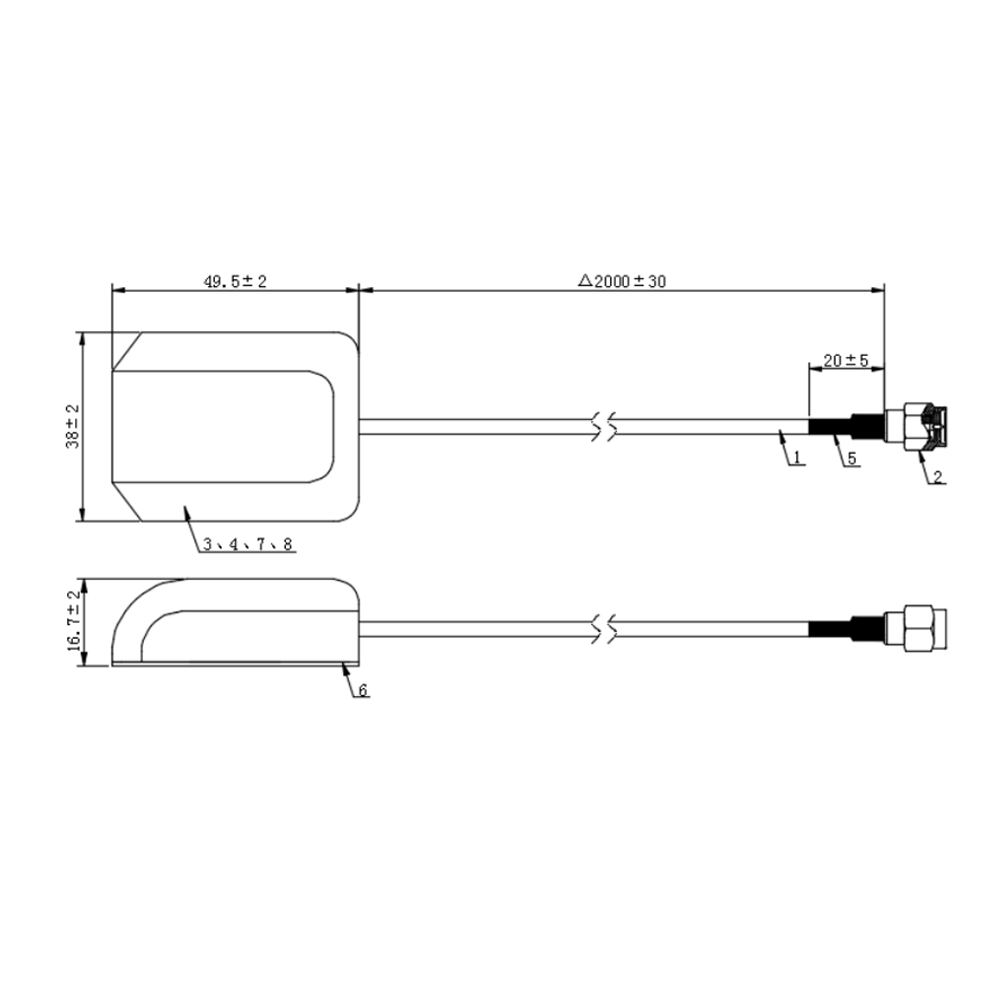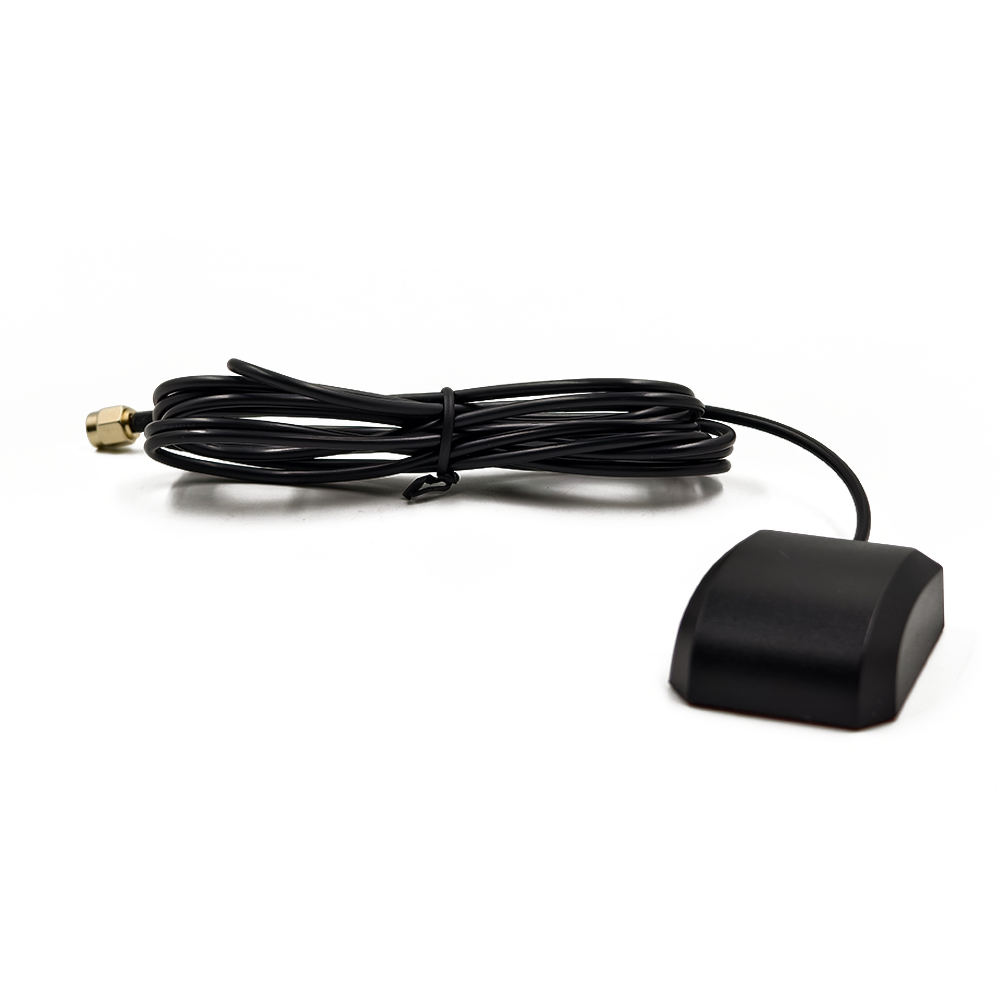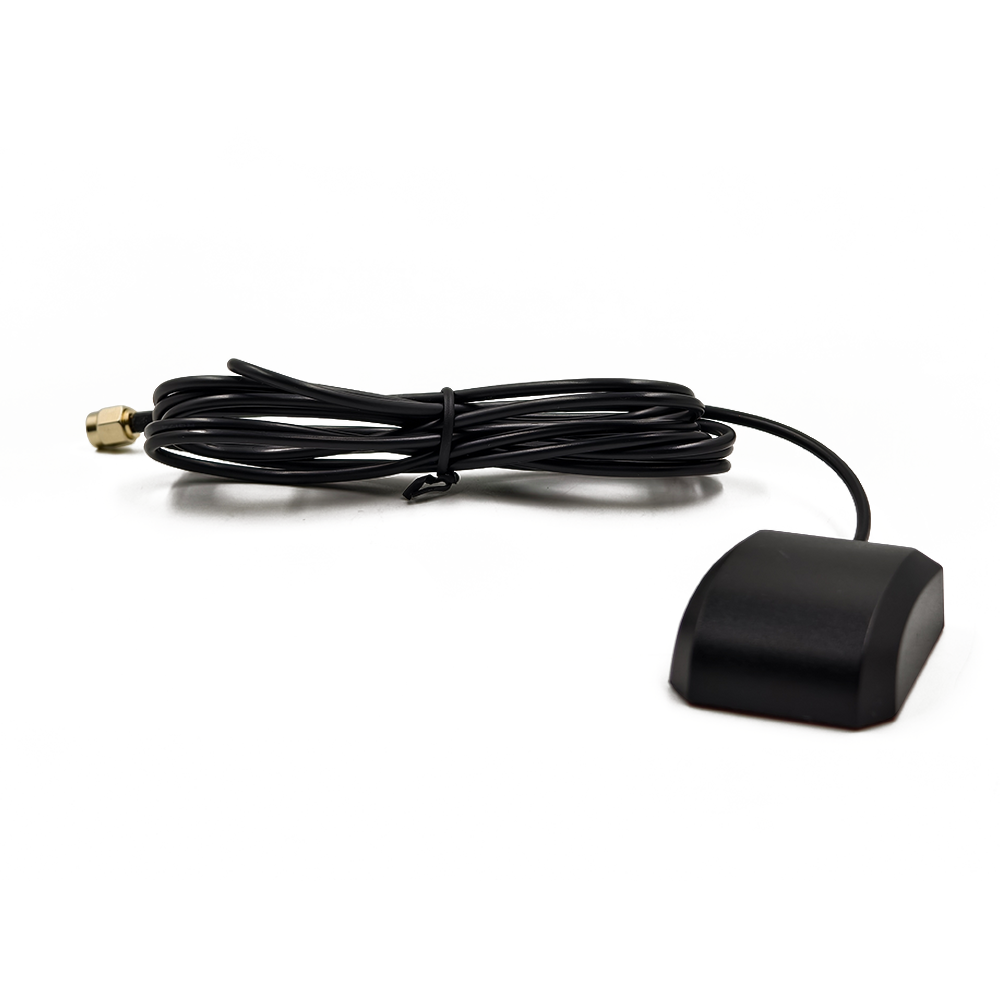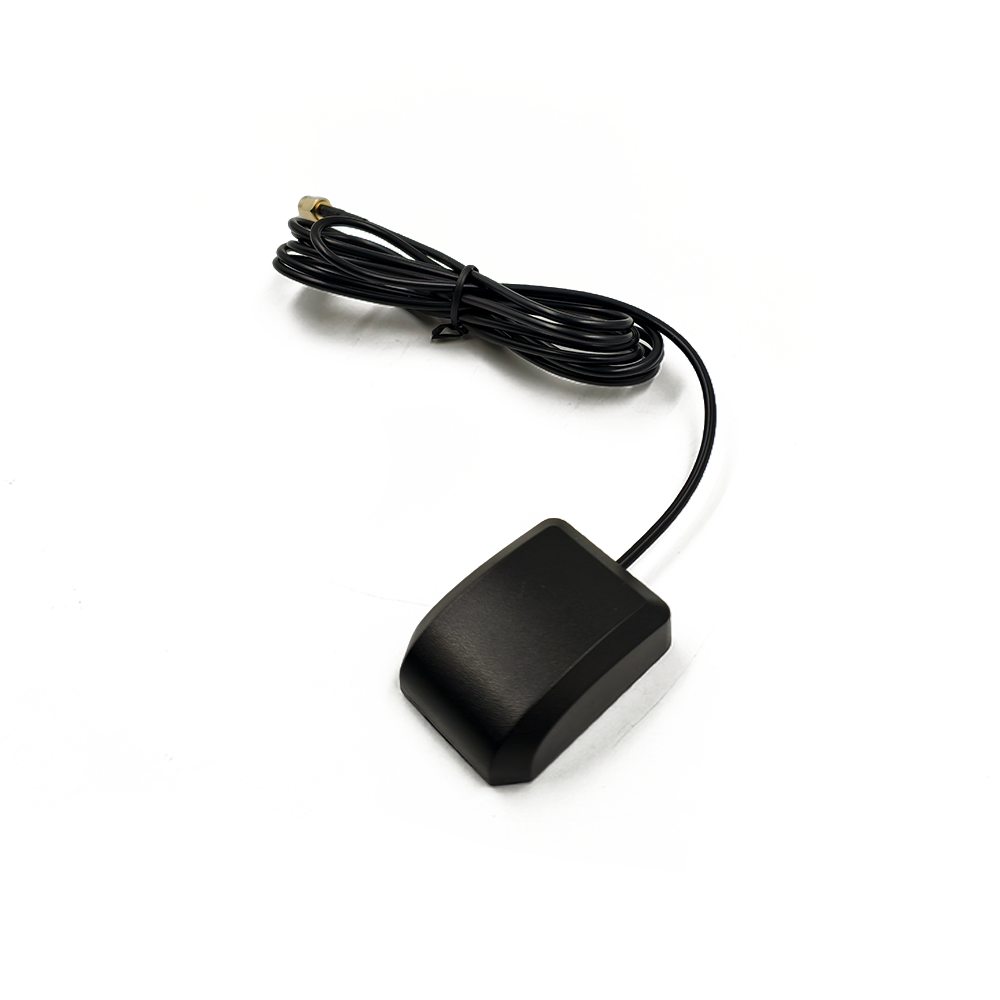Overview
These antennas are engineered to operate within the L-band spectrum (1,616–1,626.5 MHz), a frequency range allocated exclusively to Iridium for voice, data, and Short Burst Data (SBD) services. Key design parameters include right-hand circular polarization (RHCP) to match the satellite’s signal orientation, 50-ohm impedance for optimal power transfer, and 3 dB gain to ensure omnidirectional coverage. Models like the HXDC 1610-SAA (Helix Technologies) and IAA.01.121111 (Taoglas) exemplify industry standards, with compact form factors (e.g., 50.5 mm length, 26 g weight) and IP67-rated enclosures for dust and water resistance.
The market for Iridium antennas is driven by sectors such as maritime (3 million units annually), aviation, and government/defense, with a projected global value of $300 million by 2025 and a 15% CAGR through 2033. This growth underscores the antennas’ role in enabling critical applications like disaster response, asset tracking, and unmanned aerial vehicle (UAV) control.
Design and Construction
External Iridium antennas are meticulously designed to balance performance, durability, and ease of integration. Their construction involves several key elements:
2.1 Antenna Type and Polarization
Most Iridium antennas adopt a monopole or helical design to achieve RHCP, which aligns with the circular polarization of satellite signals. This minimizes multipath interference and ensures consistent connectivity even when terminals are in motion. For example, the MEA-1621-MT-TNC (Maxtena) uses a helical structure to provide pole-to-pole coverage, critical for aviation and maritime applications where terminal orientation varies dynamically.
2.2 Materials and Environmental Resistance
To withstand harsh conditions, antennas are constructed from rugged materials such as ABS plastic (MEA-1621-MT-MA) or aluminum alloys, paired with IP67-rated seals to prevent water and dust ingress. The HXDC 1610-SAA operates from -40°C to +85°C, making it suitable for Arctic expeditions or desert deployments.
2.3 Connector and Cable Specifications
Standard connectors include SMA male/female (HXDC 1610-SAA, MEA-1621-MT-MA) and TNC female (MEA-1621-MT-TNC), chosen for their low-loss characteristics. Cables like RG-174 (IAA.01.121111) or LL195W (MEA-1621-MT-MA) are used to minimize signal attenuation over distances, with lengths ranging from 1.2 m to 3 m. Customization options, such as longer cables or alternative connectors, are available for specialized installations.
2.4 Mounting Mechanisms
Antennas are designed for versatile deployment:
Magnetic mounts (IAA.01.121111) allow quick attachment to vehicle roofs without drilling.
Screw mounts (MEA-1621-MT-MA) provide secure installation on fixed structures.
Pole mounts (MEA-1621 series) are ideal for maritime masts or aviation fuselages.
2.5 Ground Plane Requirements
Some antennas, like the IAA.01.121111, require a 30 cm × 30 cm ground plane to optimize radiation patterns and reduce backlobe interference. This is particularly important for automotive applications, where metal vehicle bodies can distort signal propagation.
Working Principles
Iridium antennas function as transceivers, converting electrical signals into electromagnetic waves for satellite transmission and vice versa. Their operation hinges on three core principles:
3.1 Signal Transmission and Reception
When a terminal (e.g., Iridium handset or OpenPort modem) transmits data, the antenna radiates RHCP waves at 1,616–1,626.5 MHz, which are received by the nearest Iridium satellite. The satellite then relays the signal to a ground station via inter-satellite links. For incoming signals, the antenna captures RHCP waves and converts them into electrical signals for the terminal to process.
3.2 Polarization Matching
RHCP ensures compatibility with Iridium’s satellite design, which employs circularly polarized antennas to mitigate signal fading caused by terminal movement or satellite handoffs. Linearly polarized antennas, by contrast, would suffer from polarization loss in dynamic environments.
3.3 Frequency Allocation and Bandwidth
Iridium controls 7.775 MHz of the L-band spectrum exclusively, with an additional 0.95 MHz shared with other users. Antennas must operate within this band to avoid interference. Advanced models like the MEA-1621 series incorporate band-pass filters to reject out-of-band signals from sources such as Inmarsat terminals or radar systems.
3.4 Antenna Gain and Radiation Pattern
A 3 dB gain omnidirectional pattern ensures uniform coverage across all azimuth angles, critical for LEO satellites that move rapidly across the sky. This contrasts with GEO antennas, which require high-gain, directional dishes to track stationary satellites.
3.5 Interference Mitigation
Iridium terminals are susceptible to interference from co-located systems (e.g., Inmarsat Mini-M terminals within 15–45 meters). Antennas address this through:
Off-axis mounting (e.g., placing the Iridium antenna behind an Inmarsat dish).
External band-pass filters (e.g., Taoglas’ IAA.01 series).
Shielded cables to reduce electromagnetic interference (EMI).
Advantages and Challenges
-
4.1 Advantages
Global Coverage: Enable communication in regions beyond cellular or GEO satellite reach, such as polar areas and open oceans.
Reliability: LEO’s low latency (<40 ms round-trip) supports real-time applications like voice calls and telemetry.
Durability: IP67 ratings and wide temperature tolerances ensure operation in extreme environments.
Compactness: Lightweight designs (e.g., 26 g for HXDC 1610-SAA) facilitate integration into portable devices.
Versatility: Compatible with diverse terminals, from handsets to maritime OpenPort systems.
4.2 Challenges
Signal Obstruction: Buildings, terrain, or vehicle structures can block line-of-sight (LoS) to satellites, requiring careful antenna placement.
Interference: Co-located RF systems (e.g., radar, GPS) may degrade performance if not properly filtered.
Cost: High-performance antennas like the MEA-1621-MT-MA are priced at a premium compared to consumer-grade models.
Installation Complexity: Magnetic mounts are plug-and-play, but screw or pole mounts may require professional installation.
Cable Loss: Long cables (>3 m) introduce signal attenuation, necessitating low-loss materials like LL195W.
Applications and Future
-
5.1 Current Applications
Maritime: Used on cargo ships, fishing vessels, and yachts for crew welfare, navigation, and emergency communications.
Aviation: Installed on aircraft for cockpit voice and data links, especially in remote regions without ground-based ATC.
Government/Defense: Deployed on military vehicles, UAVs, and field bases for secure command and control.
Land Mobile: Supports asset tracking for mining, oil & gas, and logistics companies operating in off-grid areas.
Disaster Response: Enables communication in earthquake or hurricane zones where terrestrial networks are destroyed.
5.2 Future Trends
Miniaturization: Advances in materials science (e.g., metamaterials) will reduce antenna size while maintaining performance.
Multi-Band Integration: Antennas combining Iridium with GPS, GLONASS, or LTE (e.g., MEA-1621-GGG) will streamline device designs.
AI-Driven Optimization: Machine learning algorithms could dynamically adjust antenna parameters (e.g., gain, polarization) based on environmental conditions.
5G Satellite Convergence: As 3GPP standardizes NTN (Non-Terrestrial Networks), Iridium antennas may evolve to support hybrid terrestrial-satellite systems.
Low-Cost Solutions: Economies of scale in maritime and IoT markets could drive down prices, expanding access to developing regions.
6. Conclusion
External Iridium antennas are indispensable for global satellite communication, offering unmatched reliability in environments where traditional networks fail. Their design—combining RHCP, rugged materials, and versatile mounting—addresses the unique challenges of LEO connectivity. While challenges like interference and cost persist, ongoing innovations in miniaturization, multi-band integration, and AI optimization promise to expand their applications. As the Iridium constellation evolves and satellite-IoT ecosystems mature, these antennas will remain at the forefront of enabling critical communications for industries ranging from maritime logistics to disaster relief.




































































 Language
Language
 En
En Cn
Cn Korean
Korean

 Home >
Home > 








 18665803017 (Macro)
18665803017 (Macro)













